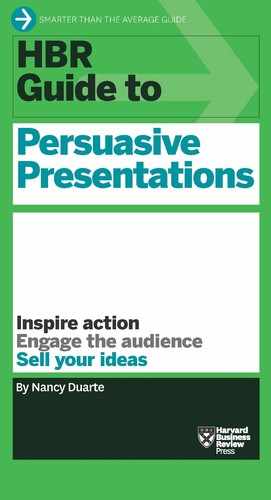Define How You’ll Change the Audience
When you present, you’re asking the people in the room to change their behavior or beliefs in some way, big or small. Before you begin writing your presentation, map out that transformation—where your audience is starting, and where you want people to end up. This is the most critical step in planning your presentation, because that desired endpoint is the whole reason you’re presenting in the first place, and people won’t get there on their own.
Ask yourself, “What new beliefs do I want them to adopt? How do I want them to behave differently? How must their attitudes or emotions change before their behavior can change?”
By thinking through who they are before they enter the room and who you want them to be when they leave, you’ll define their transformation arc, much as a screenwriter plans the protagonist’s transformation in a film.
Let’s say you work in the development office at a university and you’re delivering a presentation to potential donors. The audience transformation might look like the one shown in table 1-2.
Change typically doesn’t happen without a struggle. It’s hard to convince people to move away from a view that is comfortable or widely held as true, or change a behavioral pattern that has become their norm. You are persuading members of your audience to let go of old beliefs or habits and adopt new ones. Once you understand their transformation, you can demonstrate empathy for the sacrifices they may need to make to move your idea forward.
